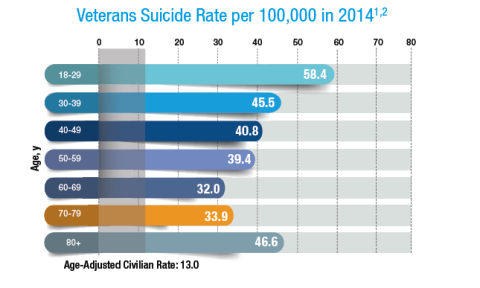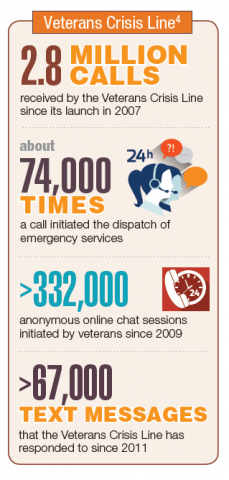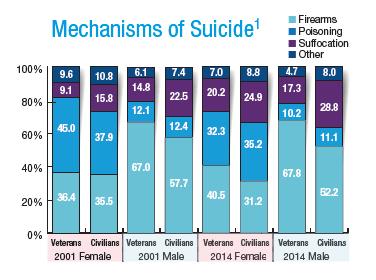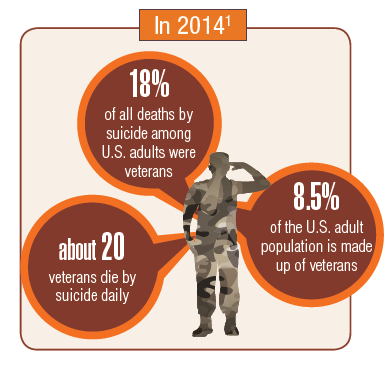Although rates of suicide have been increasing across the U.S., active-duty service members and veterans’ suicides have outpaced civilian rates. For many years, the military and VA struggled to quantify the number of suicides, but increasingly the DoD and VA have developed better reporting systems and have compiled more data to have a better understanding of this public health crisis.
For its 2016 report, VA examined more than 55 million records from 1979 to 2014 from all 50 states and 4 territories from veterans both inside and outside the VA health system. “Nothing is more important to me than making sure that we don’t lose any veterans to suicide,” VA Secretary David J. Shulkin, MD, said at a June 5, 2017, press conference. “As you know, 20 veterans a day are dying by suicide. That should be unacceptable to all of us. This is a national public health crisis, and it requires solutions that not only VA will work on but all of government and other partnerships in the private sector, nonprofit organizations.”
Much of the data from the VA report are startling. An average of 20 veterans die by suicide each day, and 14 of those veterans did not access VA health care services. Despite being just 8.5% of the U.S. population, veterans account for 18% of all deaths by suicide. In 2014, about 67% of all veteran deaths by suicide were the result of firearm injuries. Suicide impacts just about every veteran demographic: 65% of all veterans who died by suicide were aged 50 years or older. Women veterans were 2.4 times more likely to die by suicide than were nonveteran women.
In response, the VA has refocused its efforts in a number of directions. Secretary Shulkin has announced that veterans with other-than-honorable discharges will now be permitted to access VA mental health services. Since its launch in 2007, The Veterans Crisis Line has answered nearly 3 million calls.





